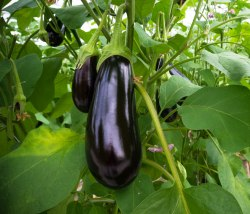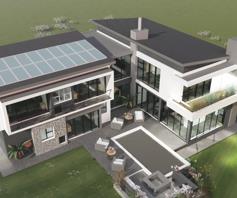Who would have thought that living space some 15, 20 or 50m up in the air would be suitable for growing herbs and vegetables?
 If you have a north- or east-facing balcony, you can successfully grow your own vegetables. The space doesn’t have to be that big either, as you can comfortably grow vegetables, salad greens and herbs in pots.
If you have a north- or east-facing balcony, you can successfully grow your own vegetables. The space doesn’t have to be that big either, as you can comfortably grow vegetables, salad greens and herbs in pots.The good news is, if you have a north- or east-facing balcony, you can successfully grow your own vegetables. The space doesn’t have to be that big either, as you can comfortably grow vegetables, salad greens and herbs in pots.
Even veggies that twirl and twine like cucumber and butternut, can thrive in contained spaces.
Because weight is an issue for balcony gardens, it is recommended that you use lightweight plastic pots that are affordable.
Kathy Varney, Marketing Executive from Ball Straathof, a supplier of horticultural services and products, shares some tips…
1. Location, location, location
Most vegetables need at least six hours of sun a day. In summer, unless some shade is provided using screens, west-facing balconies are generally too hot for plants.
East-facing balconies that receive morning sun as well as north-facing balconies are best for growing vegetables.
 Veggies like tomatoes, brinjals and cucumber need bigger pots while herbs can be grown in smaller pots.
Veggies like tomatoes, brinjals and cucumber need bigger pots while herbs can be grown in smaller pots.2. Bigger is better
Because soil dries out faster in containers, the larger the container, the longer it will stay moist.
Veggies like tomatoes, brinjals and cucumber need bigger pots while herbs can be grown in smaller pots.
Ideally, pots for vegetables should be a minimum of 30cm in diameter and have drainage holes.
Top tip
If you’re short on floor space, make use of any vertical space that’s available. Hang up baskets, use stackable containers, mount shelves and wire racks, or create a living wall by fixing plant pockets onto the wall.
3. Quality first
Buy good quality potting soil (a mix of organics) and add a sustained release organic fertiliser (3:1:5). Make sure that the fertiliser is not salt-based as it will dehydrate your plants in hot, dry conditions.
4. Plan for watering
In summer, water every day during the hottest months and every second to third day as it cools down.
 If you’re looking for cheap container options, reuse food cans, burlap bags, 2 litre cold drink bottles, crates, yoghurt containers and anything else that can serve as a pot plant.
If you’re looking for cheap container options, reuse food cans, burlap bags, 2 litre cold drink bottles, crates, yoghurt containers and anything else that can serve as a pot plant.The soil should be moist but never waterlogged or completely dry. If you’re worried about water draining onto the floor, place the pots on saucers.
After the water has drained through, empty it into a bucket for reuse. Alternatively, fill the saucer with stones and stand the pot on the stones. This will add to the humidity but the pot won’t get waterlogged.
5. Move it
The angle of the sun changes as summer moves towards winter. Place a wheeled pot trolley, which is available in garden centres, under a large pot and move it to follow the sun.
6. Recycle
While a balcony is not the place for a compost heap, it will accommodate a wormery.
Vermicompost is high in nutrients, and a little goes a long way.
All the worms need are household vegetable scraps and newspaper. Wormeries can be ordered through the internet or through garden centres.
 You can also grow butternut (Honeynut), eggplant (Patio baby), gold Zucchini (Easy Pick) fruit, mixed salad and Asian greens.
You can also grow butternut (Honeynut), eggplant (Patio baby), gold Zucchini (Easy Pick) fruit, mixed salad and Asian greens.Top tip
If you’re looking for cheap container options, reuse food cans, burlap bags, 2 litre cold drink bottles, crates, yoghurt containers and anything else that can serve as a pot plant.
7. What to grow
When planting vegetables on a balcony, go for dwarf varieties like cherry tomatoes (tumbler, tumbling tom red, tumbling tom yellow), mini vine cucumbers (patio snacker), mini sweet pepper (cute stuff gold and cute stuff red) and dwarf capsicum jalapeno (La Bomba).
You can also grow butternut (Honeynut), eggplant (Patio baby), gold Zucchini (Easy Pick) fruit, mixed salad and Asian greens.
Top tips for first-time veggie growers
1. Start with herbs
 You can grow herbs the budget-friendly way by propagating the stems. Cut the end of the stem and place it in a glass of water until it grows some roots. Once the roots have grown a few centimetres long, you can transplant the herbs into a pot.
You can grow herbs the budget-friendly way by propagating the stems. Cut the end of the stem and place it in a glass of water until it grows some roots. Once the roots have grown a few centimetres long, you can transplant the herbs into a pot.These are easy to grow, and if bought in a large enough pot, they don’t need transplanting but can be used immediately.
Make sure they get enough sun.
Rosemary, prefers drier soil and fewer nutrients while basil needs more fertiliser and watering.
Herbs have always been a traditional balcony plant and the Simply Herbs range includes a compact sweet basil (Dolce Fresca), a pot of three different basils, as well as parsley, oregano and rosemary.
Top tips
You can grow herbs the budget-friendly way by propagating the stems. Cut the end of the stem and place it in a glass of water until it grows some roots. Once the roots have grown a few centimetres long, you can transplant the herbs into a pot.
You can grow the following from herb cuttings: lavender, rosemary, thyme, mint, basil, sage, and more.
2. Go green
Salad greens are the simplest vegetables to grow and the Simply Salad range has six different mixes.
Salad leaves can be harvested every three weeks by cutting back. The plants will grow back. The leafy mixes include red and green lettuce, rocket, endive, radicchio, Asian greens and kale.
3. Be choosy with tomatoes
There are many tomato varieties but for pots, the best are dwarf varieties that are determinate, which means they grow to a certain size and bear all their fruit in a few weeks.
Cherry tomatoes produce sweet, small fruit and are a good fit for balconies because they’re not that heavy.
Top tip
Don’t toss out overripe tomatoes. Cut them into slices and place them into a pot plant and cover them with soil. Periodically water the tomatoes and once the seedlings emerge, transplant them into different containers.






